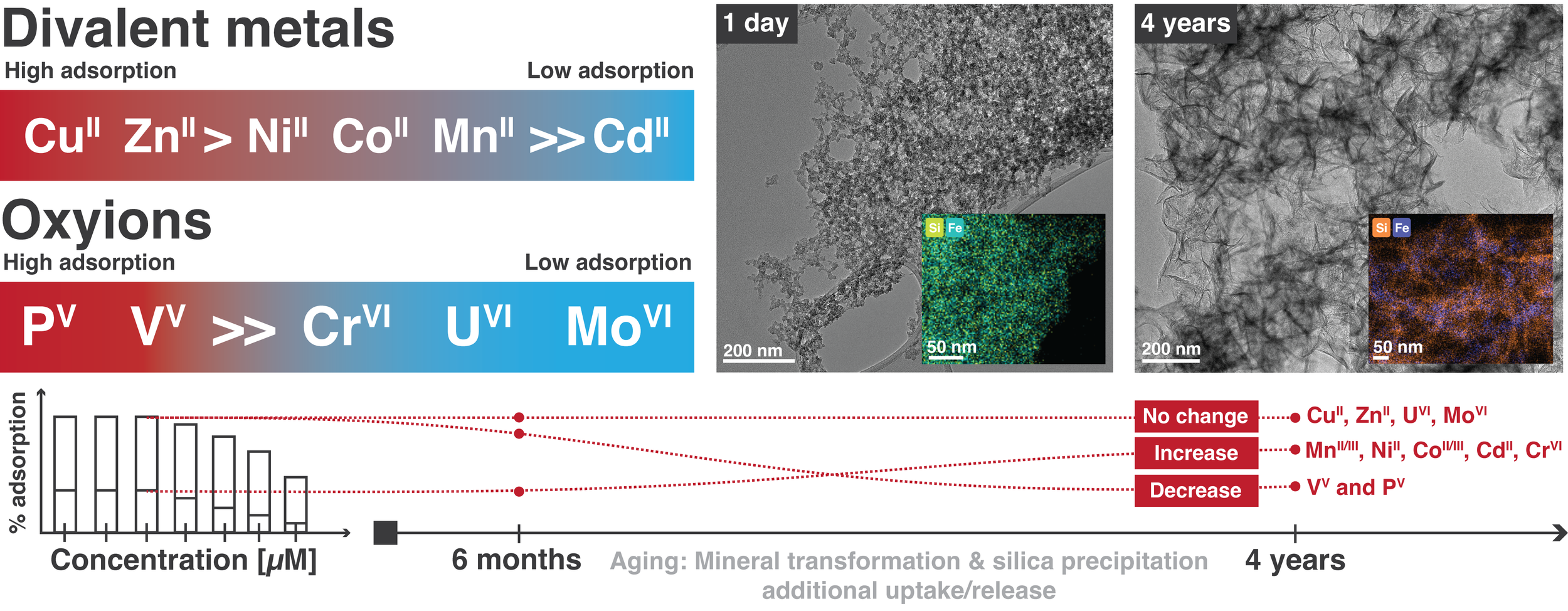Paleobiogeochemistry
Constraining nutrient and metal budgets in the Precambrian seawater
Rusty ocean in the past
Figure 1. Single-phase carbonate green rust synthesized in artificial seawater.
The Precambrian ocean was largely ferruginous (Fe-rich), evidence for which can be found in the geologic record, namely the presence of iron formations. Iron formations are Fe- and Si-rich sedimentary rocks, commonly found in the Precambrian (older than 541 million years), which are thought to have formed by the chemical precipitation of metastable precursor minerals, followed by transformation to stable minerals during diagenesis and metamorphism. As metastable minerals are kinetically more favorable with a lower barrier to mineral nucleation and precipitation, they may have exerted strong control over potential trace metal and nutrient budgets in ancient seawater via co-precipitation and sorption processes. My current projects explore the effects of two metastable Fe minerals, namely green rust and ferrihydrite, in regulating nutrient and metal budgets in the Precambrian ocean.
What is green rust and ferrihydrite?
Green rust is a metastable iron hydroxy salt which contains both ferric and ferrous iron with various anions able to substitute into the crystal lattice (e.g. carbonate, chloride, sulfate, etc.), and exist in a low-oxygen environment in the modern, e.g. hypoxic soils and meromictic lakes. Ferrihydrite is a metastable ferric oxy-hydroxide mineral that is known to be polycrystalline and is ubiquitous in many modern surface environments. Preliminary studies have shown that green rust and ferrihydrite are excellent sinks for many trace metals and nutrients. Thus, both minerals have the potential to play a significant role in regulating trace metal and nutrient budgets in the Precambrian ocean.
My role in deciphering metal and nutrient budgets in the Precambrian ocean by taking single-phase approach
In order to understand the role of iron minerals in regulating Precambrian seawater chemistry, I have been conducting a series of single-phase batch-type co-precipitation and sorption experiments involving 10 trace metals (Cd, Cu, Cr, Co, Mn, Mo, Ni, U, V, and Zn) and three nutrients (phosphate, nitrate and nitrite), specifically with green rust carbonate and ferrihydrite, in ancient seawater analog solutions across a wide range of conditions. Furthermore, I am currently developing a dynamic model of the ancient marine Fe cycle in order to quantify metal and nutrient fluxes in the Precambrian ocean. My hope is to apply my work to help illuminate our understanding of biological productivity and evolution as well as better understand trace metal proxies that have been utilized to constrain Earth's past surface oxidation state.
Publication
Long-term interaction of metals and phosphate with ferrihydrite in artificial seawater and implications for past and present environments
Sugiyama, I. and Halevy, I. (Chemical Geology)


